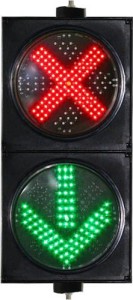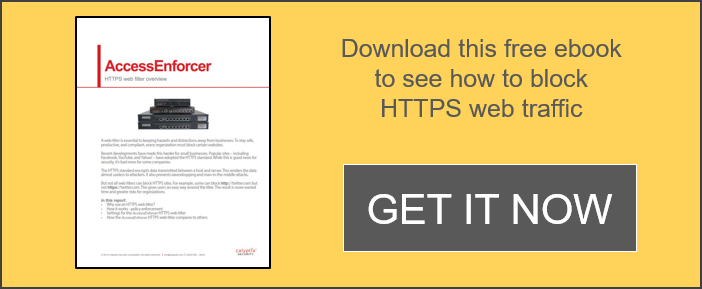 The firewall is an essential part of your network security, but only if it’s configured properly. One area people often overlook and misconfigure is the egress filter.
The firewall is an essential part of your network security, but only if it’s configured properly. One area people often overlook and misconfigure is the egress filter.
Egress filtering controls the traffic that is attempting to leave the network. Before an outbound connection is allowed, it has to pass the filter’s rules (i.e. policies). These rules are set by the administrator.
Almost every UTM firewall provides egress filtering (also known as outbound filtering). However, it is never enabled by default. The out-of-the-box setup typically allows any machine on the network to connect to any host over any port.
Since it is disabled by default, many small and medium-size organizations never use egress filtering. But if you are serious about security, then it’s an absolute must.
Egress filtering is essential. It prevents outbound connections to dangerous and unwanted hosts. It won’t solve all of your security needs, but there are many reasons to use it:
Disrupt malware
If a machine on your network is infected with malware, then an egress filter can prevent it from connecting to the malware’s command server. And if the malware tries to export the machine’s data, then the egress filter can prevent it from connecting to the destination.
Block unwanted services
Let’s say users are not allowed to browse the internet or chat with friends on Skype. An egress filter can block the ports and protocols used for these services so users cannot access them. It can also limit the block to only certain source IPs or IP ranges.
Stop contributing to attacks
Egress filtering is also good for the greater community. By blocking certain types of traffic, it prevents your machines from being used for DDoS attacks, malware hosting, spamming, and botnets.
Greater awareness of network traffic
Using an egress filter will make you more aware of the unauthorized activity on the network.
For example, the filter in AccessEnforcer will provide you with valuable logging information under Network Alerts. If a machine attempts to make unauthorized connections, then alerts will be shown in the logs, and you will know to follow-up to find the cause.
The best place to deploy egress filtering is on the edge of the network. This is typically where a UTM firewall like AccessEnorcer is placed, which makes it the perfect choice for the task.
Everything on the network must pass through the firewall to leave. The only hardware beyond the filter is the modem.
 How to configure egress filtering
How to configure egress filteringThere are two approaches to egress filtering: default-allow and default-deny.
This is the easiest type of egress filter to deploy. All outbound traffic is permitted unless a policy states that it is not allowed.
This approach can feel like playing network whack-a-mole. The admin has to allow all traffic and find the bad traffic and stamp it out.
In general, policies are created to block traffic that uses protocols and destination ports that are unnecessary or often abused.
For example, the SANS Institute recommends blocking outbound traffic that uses the following ports:
This list is only a starting point. There are many moles left to whack. For example, if the organization does not need FTP, then then TCP port 21 can also be blocked.
Egress policies can also prevent specific source IPs from making outbound connections. This can be useful for locking-down terminals that are used for payment processing and have to comply with PCI DSS.
 Default deny policy
Default deny policyA default-deny egress filter is typically more secure (assuming it’s configured properly). It blocks all types of outbound traffic unless a policy states that it is allowed.
Many small organizations unfortunately do not use default-deny, even though it’s in the best interest of their security. This is because default-deny can be disruptive.
With default-deny, every application that uses the internet – such as email, IM, and web browsers – must have a policy that allows it to pass traffic. The problem is that most small organizations do not know the full scope of systems and applications they use, so they do not know which types of traffic to pass.
Network administrators know they will need policies to pass common types of traffic, such as:
But there are many other types of outbound traffic that the business needs to function normally – and most admins do not know them offhand.
Instead of network whack-a-mole, they have to look for needles in the network haystack. Often times they will:
Also, if a new application is deployed on a machine, the admin will likely have to create a new egress filter policy to grant it access to the internet.
Many organizations do not want the headache of putting default-deny in place, so use default-allow even though it is less secure.
With default-deny, you can also allow specific IP addresses and ranges to make outbound connections, and you can control the services they are allowed to use.
For example, if only one machine on the network needs to browse websites, than you can create a policy to allow only that IP address to pass HTTP and HTTPS traffic (TCP ports 80 and 443).
More good ideas:
This can be an excellent opportunity for a proxy server to further secure the network. The proxy can be set as the only allowed source of outbound traffic. Services can be limited to select protocols such as HTTP, HTTPS, and DNS. Then all work stations can be set to only connect with the proxy.
That way, should a machine be infected, it will not be able to connect directly with the internet.
The process of identifying and allowing legitimate traffic is more than some companies wish to bear. Like everything in security, this is a balance of convenience and security. A default-allow policy may be less likely to interrupt normal business operations, but it’s also less secure.
Effective egress filtering is not easy to implement, but it is worth the effort. And it may become more common in the future. For example, PCI DSS requires it, and other industry regulations may follow suit.
Egress filtering, and even default-deny, are in the best interest of the organization’s security, even if they are inconvenient at times.

Community Shield®: A New Line of Defense
SANS Institute: Egress Filtering FAQ
SANS Institute: Performing egress filtering
DDoS Attacks: Trends show a stronger threat in 2015
Top Threats: Massive denial-of-service attacks
PCI DSS for IT Providers: See how the rules apply to your business.